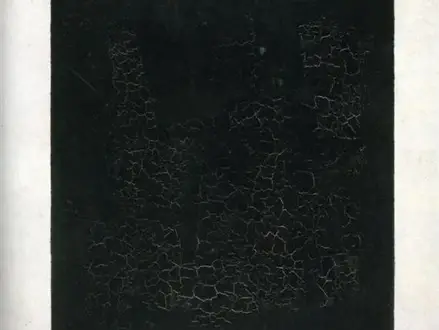Title of Artwork: “Black Suprematistic Square”

Artwork by Kazimir Malevich
Year Created 1915
Summary of Black Suprematistic Square
It’s hard to think of Kazimir Malevich without thinking of his iconic painting, Black Square (also known as The Black Square or Malevich’s Black Square). 1915 was the year of the initial draught. These four variants were painted by Malevich between late 1920s and early 1930s, according to speculation. During The Last Futurist Exhibition 0.10 in 1915, Black Square was first exhibited. To paraphrase Malevich, critics, historians, curators, and artists frequently refer to the painting as “the zero point of painting.”

All About Black Suprematistic Square
Black Square by Malevich was completed in 1915. Despite the author’s “1913” inscription on the back, he produced four different versions of the painting, the most recent of which is thought to have been painted in the late 1920s or early 1930s. Common names for the painting include “Black Square,” “The Black Square,”
and even “Malevich’s Black Square.” At the Last Futurist Exhibition 0.10, it was first displayed.
An examination of forensic evidence reveals how Black Square was painted on top of a more complex and colourful design.
This work of abstract painting in the Western tradition has been called a seminal work of modern art by numerous scholars, curators, and critics.
Suprematism, a movement that Malevich proclaimed, but which today is almost exclusively associated with the work of Malevich and his apprentice Lissitzky, was declared in the square.
Russian avant-garde movement had a few supporters, but it was dwarfed by its sibling constructivism, which aligned better with the revolutionary communist government’s ideology during its first days in power in Soviet Union. As a bridge between futurism and constructivism, suprematism may be considered a transitional phase in Russian art’s evolution.
More broadly speaking, the painting signifies a shift from representational to abstract painting—a difficult transition for which Black Square has become a key shorthand, touchstone, or symbol in the art world.
As a paraphrase of several comments Malevich made about The Black Square in letters to colleagues and dealers, the work is frequently referred to as the “zero point of painting” by critics, historians, curators, and artists.
A few comments from Malevich had been made about my painting.
According to Peter Schjeldahl:
As a result of the Soviet government’s carelessness and contempt, the original Black Square has degraded significantly over time.
According to Peter Schjeldahl’s article:
Art historians at Russia’s Tretyakov Gallery discovered a message hidden beneath the “Black Squareblack “‘s paint in 2015. “Battle of negroes in dark cave,” it was thought to read.
“Combat de Nègres dans une cave pendant la nuit” or “Negroes Fighting in a Cellar at Night” was the French writer Alphonse Allais’s caption for an 1897 comic. They think Malevich was responding to a racist joke in Allais’ popular work, according to the State Tretyakov Gallery researchers.
Information Citations
En.wikipedia.org, https://en.wikipedia.org/.

























